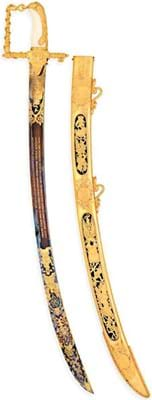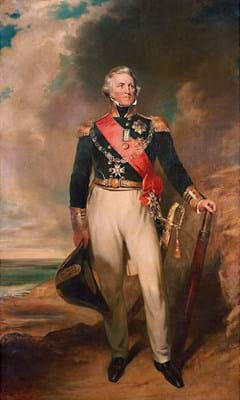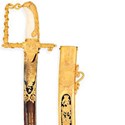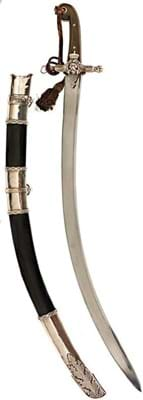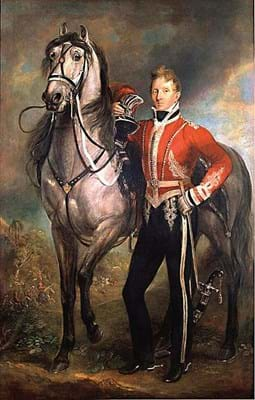When these Lloyd’s swords were first awarded (at values of £30, £50 and £100 according to rank) they were seen as the ultimate reward for gallantry in battle at sea “above and beyond the call of duty”.
The regard in which they are now held when they do appear on the market was reflected in the £120,000 paid for the sword awarded to Philip Charles Durham, captain of HMS Defiance at the Battle of Trafalgar.
David Williams, Bonhams head of arms and armour, said: “The Lloyd’s £100 Patriotic Swords were a token of the esteem in which the ships’ captains at Trafalgar were held.”
Durham was one of 23 captains to be given swords for their service at Trafalgar, each with its unique presentation inscription.
His read: From The Patriotic Fund At Lloyds To Philip Chas. Durham Esqr. Cap.tn Of H.M.S. Defiance For His Meritorious Services In Contributing To The Signal Victory Obtained Over The Combined Fleets Of France And Spain Off Cape Trafalgar On The 21st Oct.r 1805.
By the time of Trafalgar he had already been heavily rewarded for his exploits at sea, including a piece of plate valued at £500 for shepherding home a convoy of Indiamen from St Helena in 1801. He finished his career a full admiral and commander-in-chief at Portsmouth.
The sale took place on November 24.
Indian service
The East India Company also presented swords on its own account for outstanding actions by both soldiers and sailors.
An example of one of these turned up at Antony Cribb’s (22% buyer’s premium) virtual auction on November 11.
Mounted in white metal rather than gilt, this was a much more humble weapon than the glittering Lloyd’s sword, but would have made a stylish addition to an officer’s equipage. It was of typical mameluke form with lion mask and mane mounts at the hilt and came with its original white metal mounted leather-wrapped scabbard, with the presentation panel April 21st BAREILLY 1816.
Its recipient, Major George Cunningham, served with the 7th Bengal Native Infantry and commanded the 2nd Rohilla Cavalry during the Bareilly Uprising of 1816.
The sword sold at Cribb’s auction for £8000.
Sign of esteem

The sword presented to Lieutenant General Watson by his officers after service in Java, 1813 – £13,000 at Thomas Del Mar.
A third form of presentation sword was among the lots at Thomas Del Mar on December 8 when a handsome gold-mounted sabre reached a hammer price of £13,000.
In this case the award came not from an outside party but from the recipient’s own subordinates, as recorded in the presentation inscription: Presented to Lieutenant General Watson of H.M. 14th Regiment, by the Officers who had the honour to serve under him whilst he commanded the Samerang Division in the island of Java as a testimony of their esteem, December 1813.


